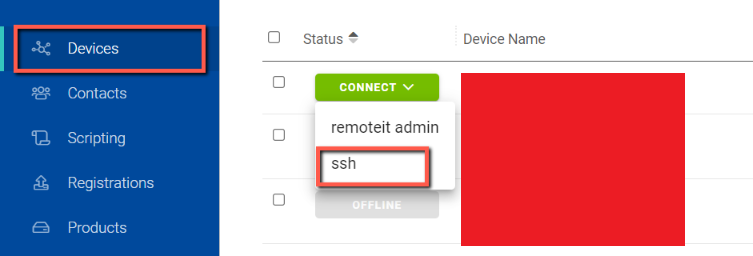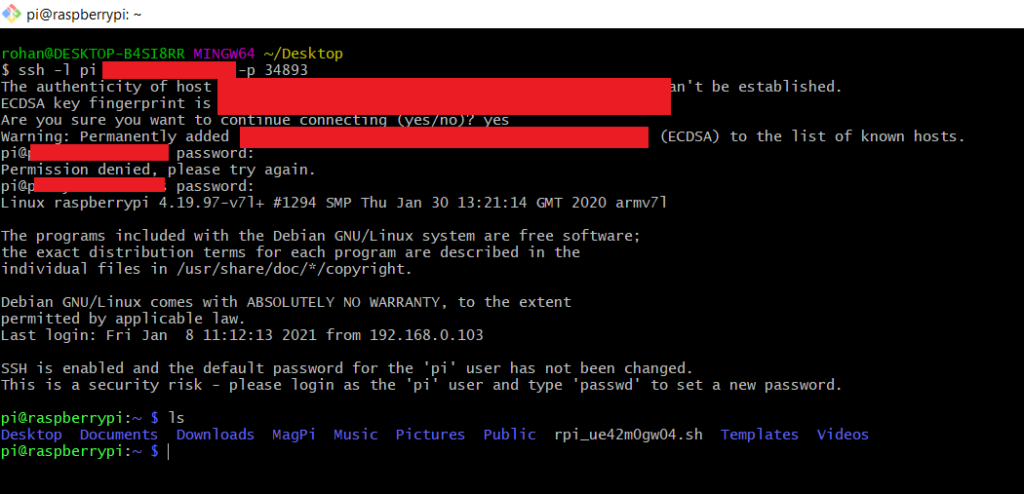To Access RaspberryPi over the internet, we need to do port forwarding.
There are a number of ways to do that:
- Set up port forwarding on your router: But port forwarding on your home/local router to access your Pi is extremely dangerous.
- Go with third-party online port forwarding services: It is recommended to go with this option to avoid security vulnerability.
I looked for third-party online port forwarding services and found remote.it. I found it very easy and straightforward to integrate RaspberryPi with it and was able to connect to my RaspberryPi over the internet.
How to integrate your RaspberryPi with Remote.it:
There are 4 simple steps to do that:
1. Register at remote.it
-
2. Install remote.it packages on your Raspberry Pi
Use the following command to install remote.it package on your RaspberryPi.
sudo apt update sudo apt install remoteit
After installation of remote.it package on RaspberryPi, at end of the installation logs, you will see the information for further device configuration. You need this information in the next step and it looks like this:
================================================================================
Continue your device configuration at http://find.remote.it
or http://raspberrypi.local:29999
or http://192.168.0.100:29999
================================================================================
-
3. Add Raspberry Pi device to remote.it: Use one of the URLs from the previous step and navigate to the page. You will see your device on-page and you just need to add your device to remote.it.
Note: You must be on the same wifi network else you won’t able to see your device
-
4. Access your device via ssh: Switch to another network, log in to your remote.it accounts. You will see your Pi under devices, click on your Device > Connect > ssh.

After clicking on ssh option, you will get ssh details. Look at the following screenshots.

Use ssh details and ssh into your RaspberryPi device.

Hope this blog is helpful for your IoT projects.

I love technology and learning new things. I explore both hardware and software. I am passionate about robotics and embedded systems which motivate me to develop my software and hardware skills. I have good knowledge of Python, Selenium, Arduino, C and hardware design. I have developed several robots and participated in robotics competitions. I am constantly exploring new test ideas and test tools for software and hardware. At Qxf2, I am working on developing hardware tools for automated tests ala Tapster. Incidentally, I created Qxf2’s first robot. Besides testing, I like playing cricket, badminton and developing embedded gadget for fun.

Thank you for the great write-up on how to use remote.it on your RaspberryPi! Glad you’re enjoying it. We hope your followers will enjoy remote.it, too! Please feel free to reach-out if you have any thoughts on any new features or improvements you’d like to see 🙂 Thanks again!
Hello, We have some updated streamlined instructions for installation and configuration of your Raspberry Pi or Linux based systems.
Please see https://link.remote.it/support/rpi-linux-quick-install
Thank you for the updated instructions.